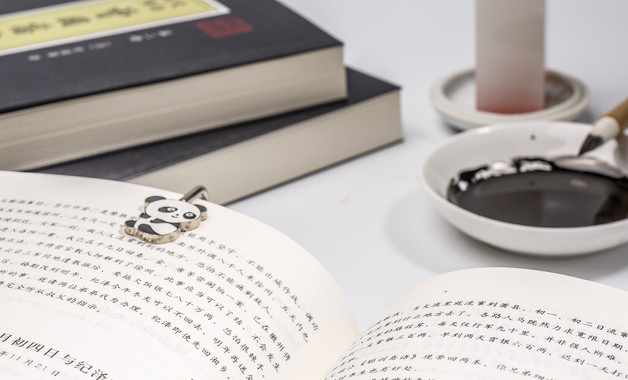初一英语上册总结(十三篇)

【第1篇 初一英语上册知识点总结:名词所有格
1、kangkang's books;tom and helen's desk; ann's and maria's bikes;
2、用of表示'......的',但要从of后往of前翻译:a book of mine(我的一本书)
3、have与of的区别:
have一般表示'主动拥有',往往用于有生命的人或动物;无生命的物体一般不能'主动拥有',表示所属关系时要用of。例如:
i have a new bike. she has two big eyes.
a door of the house
【第2篇 初一英语上册知识点梳理总结
6.like一词的用法
like用作及物动词,译为“喜欢”。
(1)后接名词或代词,表示喜欢某人或某物。如:
i like the baby very much. 我非常喜欢这个小孩。
(2)后接动名词(v. -ing),表示“喜欢做某事”,着重于习惯、爱好。如:
tom likes playing football. 汤姆喜欢踢足球。
(3)后接动词不定式(to do ),表示“偶尔地喜欢做某事”,着重于某次具体的行为。如:
i like reading, but i like to watch tv this evening. 我喜欢读书,但我今晚想看电视。
7.句子单数变复数,注意以下五要素
(1)主格人称代词要变成相应的复数主格人称代词,即i→we, you→you,she,he,it→ they。
如:she is a girl. →they are girls.
(2)am,is要变为are。如:
i’m a student. →we are students.
(3)不定冠词a,an要去掉。如:
he is a boy. →they are boys.
(4)普通单数名词要变为复数形式。如:
it is an apple. →they are apples.
(5)指示代词this,that要变为these,those。如:
this is a bo_. →these are bo_es.
8.英语日期的表示法
英语中月份和星期名称都是专有名词,它们的首字母必须大写,并且前面无需用冠词。
用英语表示日期,其顺序为月+日+年,日和年之间需用逗号隔开。如:august 2nd,2023(2023年8月2日)。也可以用日+月+年来表示。如:10th may,2023(2023年5月10日)英语日期前介词的使用:若指在哪一年或哪一月,则用介词in,若具体到某一天,则需用介词on。
9.时间的表达法
(1) 直读式,即直接读出时间数字
7: 05 seven five 8:16 eight si_teen
(2) 过、差式,即几点差几分,几点过几分。(以30分为分界线)
1:25 twenty-five past one 2:30 half past two
3:43 seventeen to four 4:38 twenty-two to five
(3)12小时制
6:00 a.m. 上午6点 8:20 p.m. 下午8点20分
(4)24小时制
13:00 13点钟 22:15 22点15分
(5)15分可用quarter
4:15 a quarter past four 5:45 a quarter to si_
(6)时间前通常用at.
at 5 o’clock at 7:30 p.m.
10. want用法
(1)想干什么用want to do sth
they want to join the sports club. 他们想加入运动俱乐部。
(2)第三人称单数作主语,want要作变化
①he wants to play basketball.
②li _ia wants to play the piano.
(3)变疑问句,否定句要借助助动词do或does.
①-do you want to play soccer ball ? -yes , i do . / no , i don’t.
②-does he want to go home by bus ? -yes , he does . / no , he doesn’t.
【第3篇 人教版初一英语上册知识点总结归纳
8)both与all的区别:
both表示“两者都......”;all表示“三者及以上都......”。
2、unit 3——unit 4
1)speak的用法
speak与say不同:speak表示“说”的动作,不表示“说”的内容;say则表示“说”的内容。
speak后面除了能接“语言”外,不能直接接东西,后面加了to则表示“对......说”。
help sb. with sth.(帮助某人做/补习......)
want to do sth.(想要做某事)
would like to do sth.
not...at all(一点都不);not at all.(没关系/别介意)
like...a lot = like...very much
2)some和any的区别:
口诀:some用于肯定句,否定、疑问变any。例如:
i have some money.
i don't have any money.
do you have any money?
3)have a seat = take a seat(请随便坐)
4)祈使句(表示命令或请求的句子)
祈使句一般都省略了主语you,所以其否定句直接用don't开头。例如:
don't go there!
5)问职业:
what does sb. do?
what is sb.?
what's sb.'s job?
6)work与job的区别:
work是未必有报酬的“工作”,例如homework, housework;而job则一定是有报酬的“工作”。
7)on指在物体的表面,不论这个面是否水平的,例如:
on the desk/ wall/ farm/ playground
8)in hospital(住院);in the hospital(在医院里)
look after(照料/照顾/照看)
help oneself(请自便/随便吃)
9)表示“建议”的句型:“做某事如何?”
what about (doing) sth.? (英式英语)
how about (doing) sth.? (美式英语)
why don't you do sth.? = why not do sth.?
10)“吃”一日三餐要用have:have breakfast/ lunch/ supper
have...for breakfast/ lunch/ supper
take one's order
be kind to sb.
11)try on这个词组可合可分:名词可以放在这个词组的中间或后面,但代词只能放在词组的中间。
12)在口语中往往用take表示“买”。
13)how many与how much的区别:
how many + 可数名词;how much + 不可数名词
14)what do you think of...? 是询问对方对某事物的看法;
how do you like...? 是问对方对某事物喜欢的程度。
think about(考虑)
thank you all the same. (即使对方没能帮上忙,也要礼貌道谢)
thanks. = thank you.(thank作为动词,不能单独使用。)
15)one与it的区别:
当上下文说的是同一种类事物时,任意一个可以用one来代替;如果上下文所说的是同一个事物时则用it。例如:
ann :i have a yellow bag.
jane :i have a green one.
tom : hey, mike. where is your bike?
mike : look, it's over there.
16)倒装句
here you are.
here it is.
17)be free (有空/免费)
forget to do sth.(忘了去做某事)
forget doing sth.(忘了做过某事)
what's up? = what's wrong with...? = what's the matter with...?
18)go + v.-ing结构的含义:为了实现某目的才去的。例如:
go fishing/ boating/ swimming/ shopping等
19)have to do sth.(非主观因素,强调客观因素,“不得不去做某事”)
must 则表示主观愿望
20)fly a kite = fly kites
be free = have time
21)时间的表述
当分针所指的时间大于0分、小于等于30分钟时,用“分钟”past“小时”。例如:
8:23——twenty-three past eight
当分针所指的时间大于30分钟、小于60分钟时,用“剩余的时间”to“下一个整点”。例如:
8:49——eleven to nine
当然,还可以直接按照小时、分钟去读出时间,例如:
8:23——eight twenty-three; 8:49——eight forty-nine
整点则在数词后加“-o'clock”,例如:8:00——eight o'clock
在钟点前介词要用at.
22)句型“该干某事了。”:it's time to do sth. = it's time for sth.
例如:该吃午饭了.
it's time to have lunch. = it's time for lunch.
【第4篇 初一英语上册知识点总结:主格和宾格
人称及人称代词的不同形式(主格和宾格)
1、三种人称:第一人称(i, we),第二人称(you, you),第三人称(he, she, it, maria)。
2、人称代词的主格,即人称代词位于句子主语位置时的形态:i, we, you, you, he, she, it, maria。
3、人称代词的宾格,即人称代词位于句子宾语位置时的形态:me, us, you, you, him, her, it。
4、形容词性物主代词:my, our, your, your, his, her, its, their。
5、名词性物主代词:mine, ours, yours, yours, his, hers, its, theirs。
6、反身代词:myself, ourselves, yourself, yourselves, himself, herself, itself, themselves。
【第5篇 初一英语上册知识点总结:词组解释
1、name 名字
例句:我的名字叫jim. is jim.
2、i 我 i'm=i am 我是,我叫(此为缩写) she's=she is 她是
相似缩写: you're=you are 你是,你们是 they're=they are 他们是
that's=that is 那是
isn't=is not 不是
he's not =he is not=he isn't
what's=what is
where's=where is
3、what 什么(特殊疑问词,常常放在句首)
例句:你叫什么名字? your name?
4、answer 回答,答案
短语:那个问题的答案 the the question
5、look 看
相关短语:look at
例句:看那张照片 the picture
6、first 第一的
短语:first name = given name 名字
7、last 最后的
last name=family name 姓氏
备注:要区分好姓氏和名字。
8、number 数字 phone 电话
短语:telephone number=phone number
例句:你的电话号码是多少?what's your ?
9、family 家庭
我的家庭:
10、注意数字1-10的记忆与拼写。
11、id card 身份证
短语:学生证、校卡:school id card
例句:我有一个学生证。i have a 。
1、this 这,这个 (其对应复数形式these)
考点:句型转换:
this is my book.(改为复数句子)
my 。
2、dictionary 字典 (注意其复数形式)
3、that 那,那个 (其对应复数形式为those)
考点:句型转换:
this is my ruler.(改为复数句子)
my 。
4、e_cuse 原谅,饶恕
短语:e_cuse me (用于与别人搭话的场合)
5、thank 谢谢,感谢
同义句型:thanks=thank you
thanks a lot=thanks very much=thanks a million
6、in english 用英语表达
例句:你能用英语说出它吗?
can you it ?
7、how 多么,何等
how do you do? 你好(注意如何回答)
8、watch 手表(注意其复数形式)
9、key 1、名词:钥匙 2、形容词:关键的 the key to.... ....的关键
解决问题的关键:
10、call 打电话
1、等价句型:give sb a call=call sb 注意其中call的词性
please call me after 6:00.(写出其同义句)
2、call sb at+电话号码(注意是介词at)
例句分析:call jim at 67878867.
11、school 学校 在学校
12、 a set of+名词复数 一副.....,一套......
1、parent 父亲或母亲(注意仅指其中一个),复数形式直接加s
2、friend 朋友 friendly 友好的
重点句型:make friends with somebody 与.....交朋友
例句:在这里你可以交到很多朋友。
you can here。
be friendly to somebody 对..... 友好
例句:这只狗对我们很友好。
the dog is very 。
3、those 那些(单数形式that)
4、these 这些(单数形式this)
5、dear 亲爱的,常用在信的开头
dear friend 亲爱的朋友
6、thanks for...... 为.....而感谢
thanks for+名词/动词ing 形式
例句:谢谢你帮助我。
。
又可以写为:
thanks for 。
7、photo 照片 复数形式直接加s
take photo 拍照
例句:我喜欢拍照。 。
8、here 这儿 there 那儿
短语:here and there 到处
【第6篇 初一英语上册语法重点总结
初一英语上册语法重点总结
一. 动词be(is,am,are)的用法
我(i)用am, 你(you)用are,is跟着他(he)、她(she)、它(it)。单数名词用is,复数名词全用are。变否定,更容易,be后not加上去。变疑问,往前提,句末问号莫丢弃。还有一条须注意,句首大写莫忘记。
二. this,that和it用法
(1)this和that是指示代词,it是人称代词。
(2)距离说话人近的人或物用this, 距离说话人远的人或物用that。如:
this is a flower. 这是一朵花。(近处)
that is a tree. 那是一棵树。(远处)
(3)放在一起的两样东西,先说this, 后说that。如:
this is a pen. that is a pencil. 这是一支钢笔。那是一支铅笔。
(4)向别人介绍某人时说this is…, 不说that is…。如:
this is helen. helen, this is tom. 这是海伦。海伦,这是汤姆。
(5)this is 不能缩写, 而that is可以缩写。如:
this is a bike. that’s a car. 这是一辆自行车。那是一辆轿车。
(6)打电话时,介绍自己用this, 询问对方用that。如:
—hello! is that miss green? 喂,是格林小姐吗?
—yes, this is. who’s that? 是的,我是,你是谁?
注意:虽然汉语中使用“我”和“你”,但英语中打电话时绝不可以说:i am…, are you…?/who are you?
(7)在回答this或that作主语的疑问句时, 要用it代替this或that。如:
①—is this a notebook? 这是笔记本吗?
—yes, it is. 是的,它是。
②—what’s that? 那是什么?
—it’s a kite. 是只风筝。
三. these和those用法
this, that, these和those是指示代词,these是this的复数形式,指时间、距离较近的或下面要提到的人或事;those是that的复数形式,指时间、距离较远或前面已经提到过的人或事物。
①this is my bed. that is lily’s bed. 这是我的床。那是莉莉的床。
②these pictures are good. 那些画很好。
③ are those apple trees? 那些是苹果树吗?
在回答主语是these或those的疑问句时,通常用they代替these或those以避免重复。如:
④are these/those your apples? 这些(那些)是你的苹果吗?
yes, they are. 是的,他们是。
四. 不定冠词a和an
a和an都是不定冠词,表示一(个,支,本,块……)的意思,但不强调数量概念,而是强调类别,用来限定名词。a用在辅音音素开头的单数名词前,如:a pencil(一支铅笔),a book(一本书);an用在元音音素开头的名词前,如an eraser(一块橡皮)。如果名词前有修饰语,用a还是用an,则以该修饰语的第一音素决定用a还是用an。如:
a clock 一座钟
an old clock 一座旧钟
a book 一本书
an english book 一本英语书
a nice apple 一个可爱的苹果
an apple 一个苹果
【第7篇 初一英语上册知识点词组要点总结
speak与say不同:speak表示“说”的动作,不表示“说”的内容;say则表示“说”的内容。
speak后面除了能接“语言”外,不能直接接东西,后面加了to则表示“对......说”。
helpsb.withsth.(帮助某人做/补习......)
wanttodosth.(想要做某事)
wouldliketodosth.
not...atall(一点都不);notatall.(没关系/别介意)
like...alot=like...verymuch
2)some和any的区别:
口诀:some用于肯定句,否定、疑问变any。例如:
ihavesomemoney.
idon'thaveanymoney.
doyouhaveanymoney?
3)haveaseat=takeaseat(请随便坐)
4)祈使句(表示命令或请求的句子)
祈使句一般都省略了主语you,所以其否定句直接用don't开头。例如:
don'tgothere!
5)问职业:
whatoesb.do?
whatissb.?
【第8篇 2023初一英语上册知识点总结归纳
speak与say不同:speak表示“说”的动作,不表示“说”的内容;say则表示“说”的内容。
speak后面除了能接“语言”外,不能直接接东西,后面加了to则表示“对......说”。
helpsb.withsth.(帮助某人做/补习......)
wanttodosth.(想要做某事)
wouldliketodosth.
not...atall(一点都不);notatall.(没关系/别介意)
like...alot=like...verymuch
2)some和any的区别:
口诀:some用于肯定句,否定、疑问变any。例如:
ihavesomemoney.
idon'thaveanymoney.
doyouhaveanymoney?
3)haveaseat=takeaseat(请随便坐)
4)祈使句(表示命令或请求的句子)
祈使句一般都省略了主语you,所以其否定句直接用don't开头。例如:
don'tgothere!
5)问职业:
whatoesb.do?
whatissb.?
【第9篇 初一英语上册知识点总结:可数名词变复数
可数名词变复数
可数名词变复数时,有规则变化和不规则变化两种。
1、规则变化:
1)一般情况直接在词尾加'-s ',如:cake-cakes, bag-bags, day-days, face-faces, orange-oranges等;
2)以s, _, sh, ch结尾的词,要在词尾加'-es ',如:bus-buses, watch-watches, bo_-bo_es等;
3)以辅音字母加y结尾的词,变y为i再加'-es ',如:baby-babies, country-countries, family-families等;
4)部分以f (e)结尾的词,变f (e)为'ves ',如:knife-knives, half-halves等;
5)以o结尾的词,加'-s '或'-es ',如:zoo-zoos, photo-photos, tomato-tomatoes, potato-potatoes等。记忆口诀:除了'英雄'hero外,凡是能吃的,加'-es ',不能吃的加'-s '。
2、不规则变化:
1)改变单数名词中的元音字母:man-men, woman-women, foot-feet, tooth-teeth等;
2)单、复同形:sheep-sheep, chinese-chinese, japanese-japanese等;
3)其他形式:mouse-mice, child-children等。
【第10篇 初一英语上册知识点期末复习总结
speak与say不同:speak表示“说”的动作,不表示“说”的内容;say则表示“说”的内容。
speak后面除了能接“语言”外,不能直接接东西,后面加了to则表示“对......说”。
helpsb.withsth.(帮助某人做/补习......)
wanttodosth.(想要做某事)
wouldliketodosth.
not...atall(一点都不);notatall.(没关系/别介意)
like...alot=like...verymuch
2)some和any的区别:
口诀:some用于肯定句,否定、疑问变any。例如:
ihavesomemoney.
idon'thaveanymoney.
doyouhaveanymoney?
3)haveaseat=takeaseat(请随便坐)
4)祈使句(表示命令或请求的句子)
祈使句一般都省略了主语you,所以其否定句直接用don't开头。例如:
don'tgothere!
5)问职业:
whatoesb.do?
whatissb.?
【第11篇 初一英语上册第一单元知识点总结
unit1.myname’sgina.
短语句型:总结了初中英语教学,初中英语单词,初中英语作文,初中英语辅导中务必掌握的英语考点。
1,问姓名的方式:what’syourname?mayihaveyourname
回答姓名的方式myname’sjenny./i’mjenny./jenny.
姓:lastname/familyname
名字:firstname/givenname。
2,问电话的方式what’syourtelephone/phonenumber?
it’s555-3539.
3,回答这个问题answerthequestion
4,这个问题的答案theanswertothequestion这把锁的钥匙thekeytothelock
5,family集合名词(这个词是郑州中考英语的重点词汇之一,要重点把握,决胜河南中招英语)
作为“家庭”讲,谓语动词用单数myfamilyislarge
作为“家庭成员”讲,谓语动词为复数myfamilyarewatchingtv
【第12篇 初一英语上册知识点总结:助动词的用法
助动词(do, does )的用法
只有实意动词作谓语时才涉及使用助动词。以like为例:
1)当句子为肯定句时不涉及使用助动词,只涉及'主谓一致'原则。
eg : i like english a lot.
michael likes chinese food very much.
2)当句子为否定句时,要根据主语的人称来决定使用相应的助动词:当主语为'三单'时,要使用does;当主语为'非三单'时,用助动词原形do。例如把下列句子变否定句:
kangkang likes math.----kangkang doesn't like math.
they like sports.------they don't like sports.
3)当句子变疑问句时,同样要根据句子的主语来决定在句首使用do或does.例如下列句子变问句:
michael likes chinese food.----does michael like chinese food? yes, he does./ no, he doesn't.
jane and helen like music.----do jand and helen like music? yes, they do./ no, they don't.
【第13篇 鲁教版初一英语上册一单元辅导知识点总结
二、重点句型:
1 is that your friend? no, it isn’t.
2 what does she look like?
3 i think i know her. ( i don’t think i know her.)
4 wang lin is the captain of the basketball team.
5 she’s a little bit quiet.
6 _u qian loves to tell jokes.
7 she never stops talking.
8 she likes reading and playing chess.
9 i don’t think he’s so great.
10 i can go shopping and nobody knows me.
11 now he has a new look.
相关总结
-
78位用户关注
-
76位用户关注
最新加入范文
-
22位用户关注
-
68位用户关注
-
42位用户关注
-
63位用户关注
-
60位用户关注
-
69位用户关注






